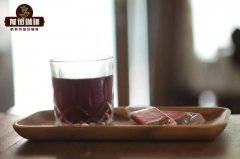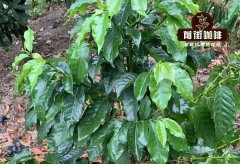What are the main varieties of coffee? what are their advantages and disadvantages? what are the coffee cherries?
In the commercial coffee industry, there are two important varieties of coffee-Arabica and Robusta. In fact, there are three main types of coffee beans: Arabica beans, Robbota beans and Liberika beans. Although there is no clear name for "Arabica coffee", the discrimination of coffee species is the most basic way to distinguish coffee.
When it comes to coffee plants, you may be surprised by these figures. There are more than 6000 tropical trees and shrubs in the genus. Experts estimate that there are 25 to 100 species of coffee plants. The genus was first described in the 18th century by Swedish botanist Carolus Linneaus, who also described Arabica coffee in the 1753 Plant species. Since then, botanists have disagreed on the exact classification because of the wide range of coffee plants. They can range from small shrubs to tall trees, with leaves ranging in size from 1 to 16 inches and colors from purple or yellow to the main dark green.

Arabica coffee
Variety: bourbon, Iron pickup, Kaddura, Mondonovo, Tiko, San Ramon, Jamaica Blue Mountain
Arabica coffee comes from primitive coffee trees found in Ethiopia. These trees produce high-quality, mild, aromatic coffee, accounting for about 70% of the world's coffee production. Compared with robusta beans, coffee beans are flatter, slender and contain less caffeine.
Arabica coffee is the most expensive in the world market. The better Arabica coffee is high-growing coffee-usually growing between 2000 and 6000 feet (610 to 1830 meters) above sea level-although the best altitude varies due to its proximity to the equator.
The most important factor is that the temperature must be kept mild, preferably between 59 and 75 degrees Fahrenheit, with about 60 inches of rainfall a year. The trees are lush, but heavy frost will kill them. Arabica trees are expensive to grow because the ideal terrain is often steep and difficult to enter. In addition, because trees are more likely to get sick than Robusta trees, they need extra care and attention.
Robusta
Variety: Robusta
Most of the world's Robusta grows in Central and West Africa, parts of Southeast Asia, including Indonesia and Vietnam, as well as Brazil. Robusta's production is increasing, although it accounts for only about 30% of the world market. Robusta is mainly used to mix coffee and instant coffee. Robusta coffee beans themselves tend to be rounder and smaller than Arabica coffee beans.
Robusta trees are healthier and more resistant to diseases and parasites, which makes it easier and cheaper to grow. It also has the advantage of being able to withstand warmer climates, preferring constant temperatures between 75 and 85 degrees Fahrenheit, which allows it to grow at a much lower altitude than Arabica coffee.
It needs about 60 inches of rainfall a year and cannot withstand frost. Compared with Arabica coffee beans, robusta coffee beans produce coffee with a unique flavor, with about 50-60% higher caffeine content.
Anatomical structure of Coffee Cherry
Coffee beans are actually processed and roasted fruit seeds, which are called coffee cherries. The exocarp of coffee fruit is called exocarp. Below it is the mesocarp, a thin layer of pulp, and then a sticky layer called parenchyma. The bean itself is called an endocarp covered by a paper envelope, often called parchment.
In the parchment, there are two beans side by side, each covered with a separate layer of film. The biological name of this seed coat is sperm, but it is often called silver skin in the coffee trade. In about 5% of the world's coffee, cherries have only one kind of coffee bean. This is called peaberry (or caracol, or "snail" in Spanish), and it is a natural mutation. Some people think that peas are actually sweeter and more delicious than standard beans, so they are sometimes hand-picked for special sale.
Important Notice :
前街咖啡 FrontStreet Coffee has moved to new addredd:
FrontStreet Coffee Address: 315,Donghua East Road,GuangZhou
Tel:020 38364473
- Prev

What is cold coffee? Is all cold coffee a cold drink? Flavor characteristics of Cold extracted Coffee
Cold brewed coffee, also known as cold brewed coffee. It refers to soaking coffee powder in cold water less than 5 ℃ for a long time, waiting for fermentation, about 8-12 hours, and then filtering the coffee grounds. This method can get the taste of ice brew without the help of professional appliances at home, and it is very simple and easy to operate. The sweetness and smoothness of cold brewed coffee will increase and the acidity will decrease. In essence
- Next

What is the lifespan of a coffee tree? can coffee grow continuously?
It is needless to say that coffee drinkers naturally recognize the characteristics of coffee beans, but when it comes to coffee trees, it is estimated that most people still do not understand them. Coffee trees are trimmed short to save energy and help harvest, but can grow to more than 30 feet (9 meters) tall. Each tree is covered with green waxy leaves and grows in pairs with each other. Coffee cherries grow along the branches.
Related
- What brand of black coffee is the most authentic and delicious? what are the characteristics of the flavor of the authentic Rose Summer Black Coffee?
- Introduction to the principle and characteristics of the correct use of mocha pot A detailed course of mocha pot brewing coffee is described in five steps.
- Which is better, decaf or regular coffee? how is decaf made?
- How much is a bag of four cat coffee?
- How about four Cat Coffee or Nestle Coffee? why is it a cheap scam?
- Which is better, Yunnan four Cats Coffee or Nestle Coffee? How about cat coffee? is it a fake scam? why is it so cheap?
- How about Cat Coffee? what grade is a hoax? which instant coffee tastes better, four Cat Coffee, Nestle Coffee or G7 coffee?
- Process flow chart of coffee making-Starbucks coffee making process what coffee tastes good at Starbucks
- The top ten best coffee beans in the world Rose summer coffee or Tanzanian coffee tastes good
- Yunnan four cat coffee is good to drink?_four cat coffee is a big brand? four cat blue mountain coffee is fake?

